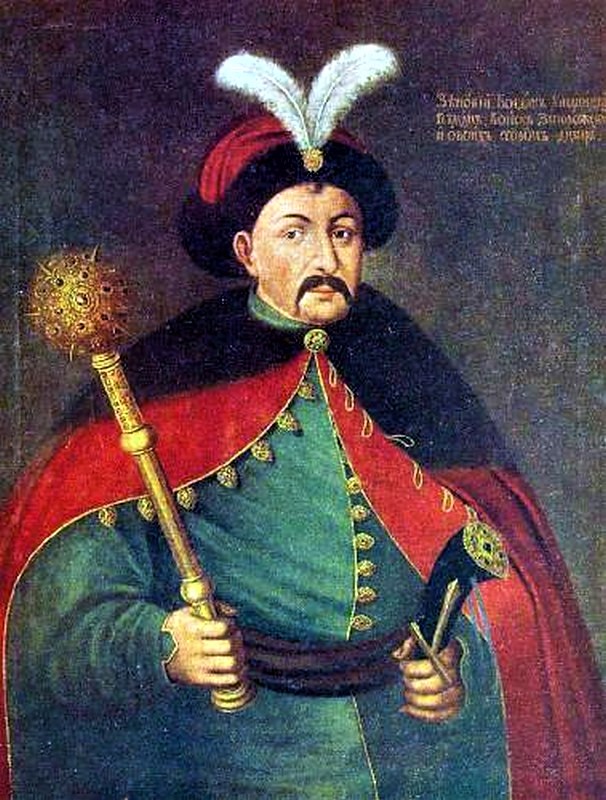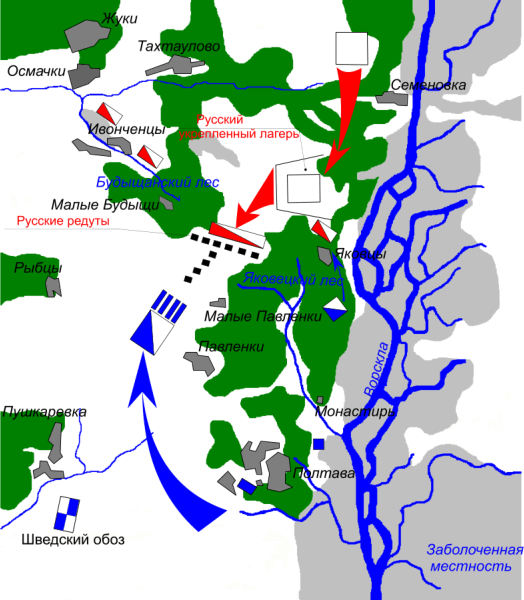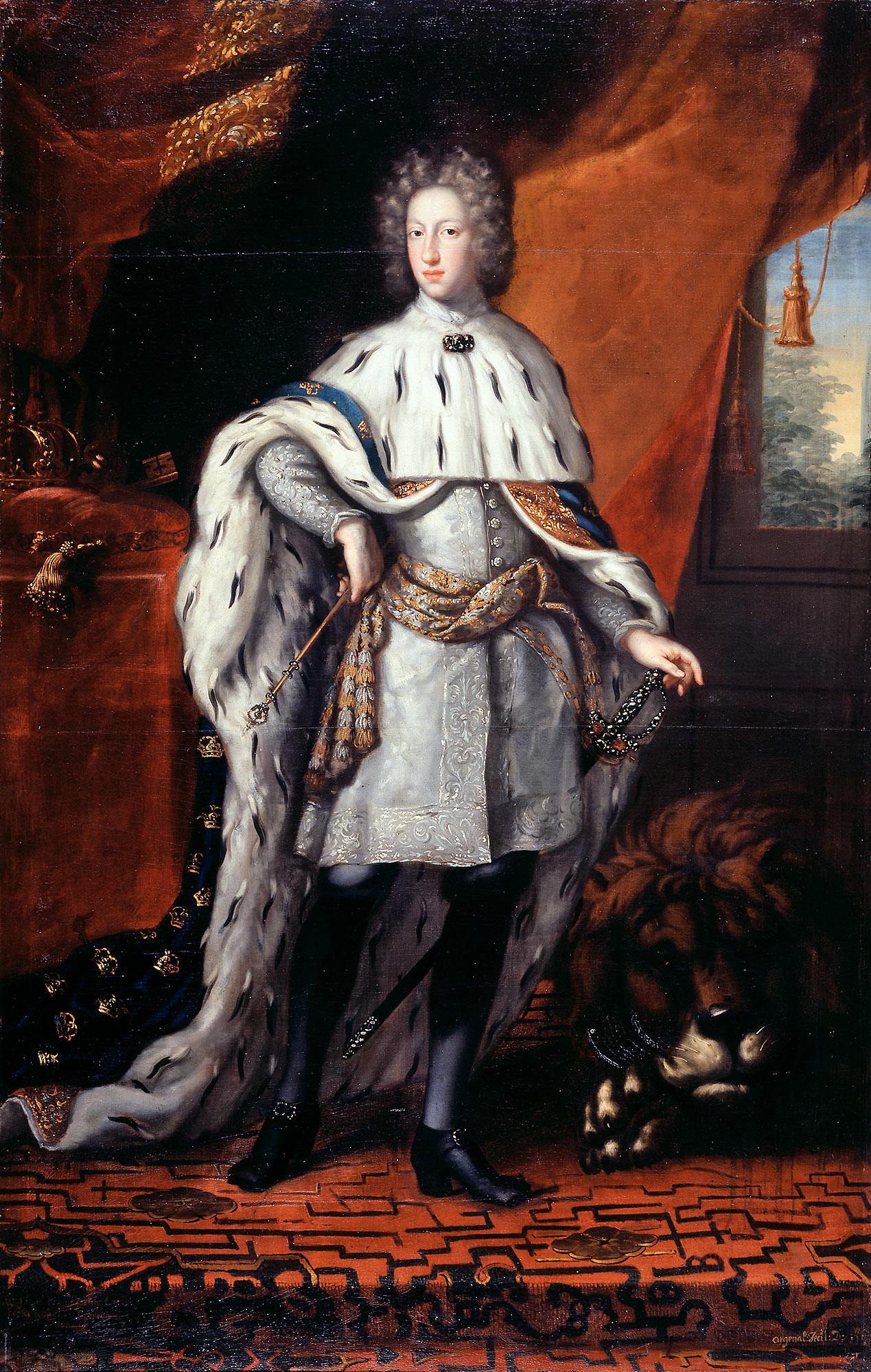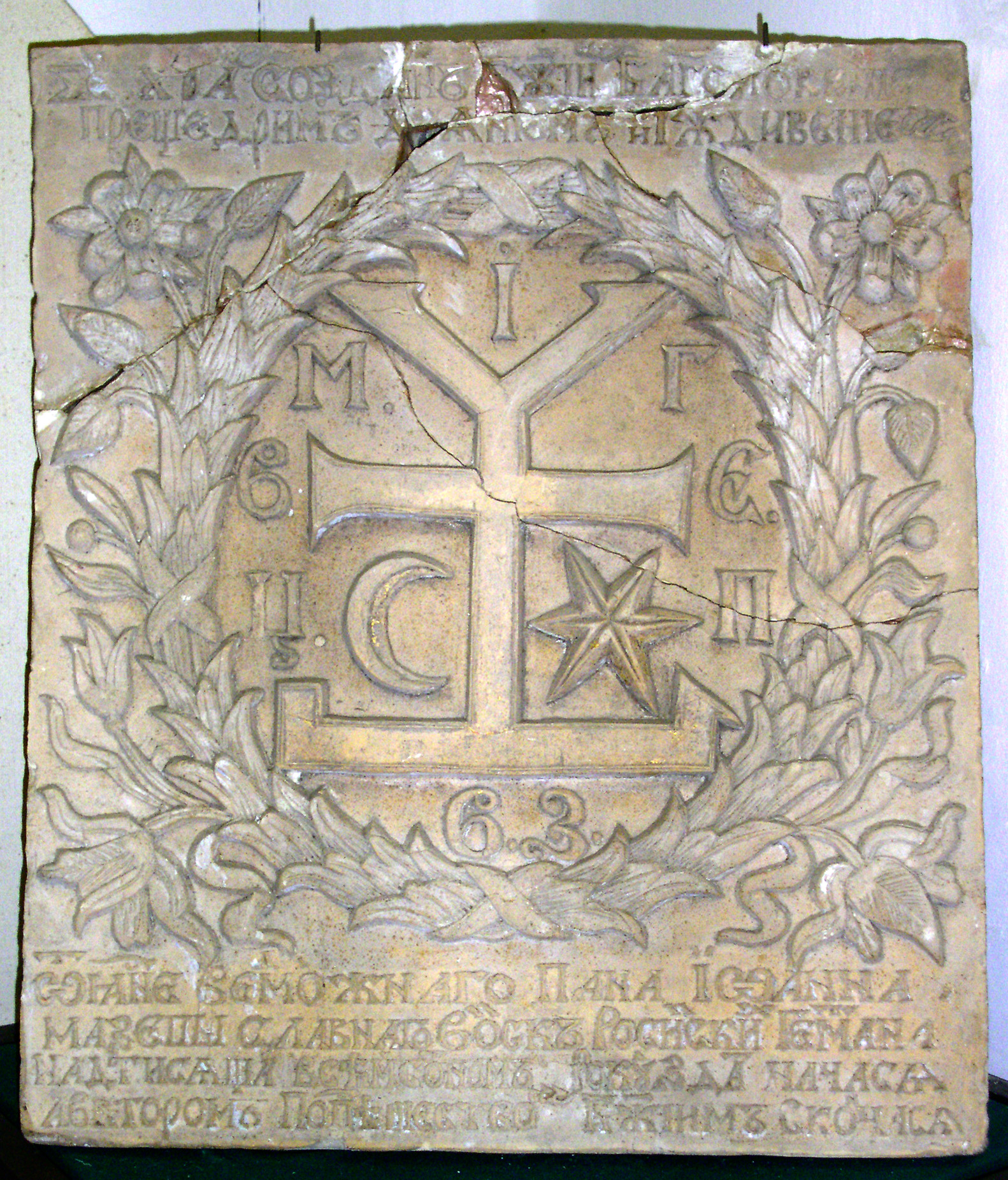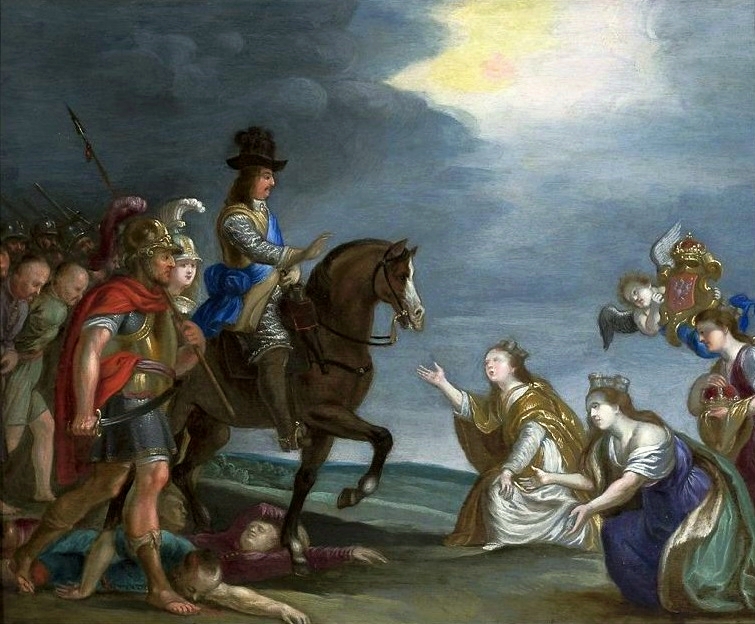|
Dănilă Apostol
Danylo Pavlovych Apostol ( – ) was Hetman of the Zaporizhian Host from 1727 to 1734. Biography Born into a Cossack family of Moldavian origin, Danylo Apostol was a prominent military leader, '' polkovnyk'' (colonel) of the Myrhorod Regiment, and a participant in the Russian campaigns against the Ottoman Empire and Crimean Khanate. He fought in the Great Northern War between 1701 and 1705 against the Swedes in Livonia and the Polish–Lithuanian Commonwealth, but in 1708, briefly joined the hetman Ivan Mazepa who sided with Charles XII of Sweden against Peter I of Russia. Later, Danylo Apostol again switched sides and fought on the Russian side, distinguishing himself in the Battle of Poltava. In 1722, he led Cossack units during the Russo-Persian War that led to the expansion of Russian power in the Caspian region. Danylo Apostol lost his eye during the capture of a Persian fortress in Derbent that led to him receiving the nickname "blind Hetman". In the 1723–1725 Cossack ' ... [...More Info...] [...Related Items...] OR: [Wikipedia] [Google] [Baidu] |
Hetman Of The Zaporizhian Host
The Hetman of the Zaporozhian Host (, ) was the head of state of the Cossack Hetmanate. The office was abolished by the Russian government in 1764. Brief history The position was established by Bohdan Khmelnytsky during the Cossack Hetmanate in the mid 17th century. During that period the office was electoral. All elections, except for the first one, took place in the Senior Council in Chyhyryn which, until 1669, served as the capital of the Hetmanate. After the Pereiaslav Agreement of 1654, several senior cossacks sided with the Tsardom of Russia and, in 1663, they convened the Black Council of 1663 in Nizhyn which elected Ivan Briukhovetsky as an alternative hetman. Since the defeat of Petro Doroshenko in 1669, the title hetman was adapted by pro-Russian elected hetmans who resided in Baturyn. In the course of the Great Northern War one of them, Ivan Mazepa, decided to revolt against Russian rule in 1708, which later drew terrible consequences for the Cossack Hetmanate as well ... [...More Info...] [...Related Items...] OR: [Wikipedia] [Google] [Baidu] |
Myrhorod Regiment
The Myrhorod Regiment () was one of the 10 territorial-administrative subdivisions of the Cossack Hetmanate. The regiment's capital was the city of Myrhorod, now in Poltava Oblast of central Ukraine. The Myrhorod Regiment was founded in 1648. In 1649 the territory of Lubny Regiment was annexed to the Myrhorod Regiment. At that time the Regiment consisted of 16 sotnias. In 1658 part of the Regiment became recreated Lubny Regiment. In 1672 a few sotnias from the Chyhyryn Regiment were added to the regiments numbers. During the 1774–1775 years, 4 sotnias from the regiment were added to the Russian Novorossiya governorate. In 1782 on the territories of the regiment were 12 towns and 1,271 villages. During this year the regiment was disbanded and all of its territories were annexed to the Kiev namestnichestvo. Structure During 1774–1775 the Regiment consisted of the following sotnias: *Bila Tserkva *Bohats *Holtviansk *Horodytsk *Khorol *Kremenchuk *Myrhorod (2) *Omelnyk *Ostap ... [...More Info...] [...Related Items...] OR: [Wikipedia] [Google] [Baidu] |
Afsharid Dynasty
The Afsharid dynasty () was an Iran, Iranian dynasty founded by Nader Shah () of the Qirqlu clan of the Turkoman (ethnonym), Turkoman Afshar people, Afshar tribe, ruling over the Afsharid Empire. List of Afsharid monarchs Family tree References Sources * * * * * * * * {{DEFAULTSORT:Afsharid Dynasty Afsharid dynasty, * Iranian Muslim dynasties Middle Eastern dynasties Shia dynasties 1730s in Iran 1740s in Iran, . 1750s in Iran, . 1760s in Iran, . 1770s in Iran, . 1780s in Iran 1790s in Iran 1800s in Iran ... [...More Info...] [...Related Items...] OR: [Wikipedia] [Google] [Baidu] |
Caspian Sea
The Caspian Sea is the world's largest inland body of water, described as the List of lakes by area, world's largest lake and usually referred to as a full-fledged sea. An endorheic basin, it lies between Europe and Asia: east of the Caucasus, west of the broad steppe of Central Asia, south of the fertile plains of Southern Russia in Eastern Europe, and north of the mountainous Iranian Plateau. It covers a surface area of (excluding the highly saline lagoon of Garabogazköl to its east), an area approximately equal to that of Japan, with a volume of . It has a salinity of approximately 1.2% (12 g/L), about a third of the salinity of average seawater. It is bounded by Kazakhstan to the northeast, Russia to the northwest, Azerbaijan to the southwest, Iran to the south, and Turkmenistan to the southeast. The name of the Caspian Sea is derived from the ancient Iranian peoples, Iranic Caspians, Caspi people. The sea stretches from north to south, with an average width of . Its gr ... [...More Info...] [...Related Items...] OR: [Wikipedia] [Google] [Baidu] |
Russo-Persian War (1722–1723)
The Russo-Persian War of 1722–1723, known in Russian historiography as the Persian campaign of Peter the Great, was a war between the Russian Empire and Safavid Iran, triggered by the tsar's attempt to expand Russian influence in the Caspian and Caucasus regions and to prevent its rival, the Ottoman Empire, from territorial gains in the region at the expense of declining Safavid Iran. The Russian victory ratified for Safavid Iran's cession of their territories in the North Caucasus, South Caucasus and contemporary northern Iran to Russia, comprising the cities of Derbent (southern Dagestan) and Baku and their nearby surrounding lands, as well as the provinces of Gilan, Shirvan, Mazandaran and Astarabad conform the Treaty of Saint Petersburg (1723). The territories remained in Russian hands for nine and twelve years, when respectively according to the Treaty of Resht of 1732 and the Treaty of Ganja of 1735 during the reign of Anna Ioannovna, they were returned to Iran. ... [...More Info...] [...Related Items...] OR: [Wikipedia] [Google] [Baidu] |
Battle Of Poltava
The Battle of Poltava took place 8 July 1709, was the decisive and largest battle of the Great Northern War. The Russian army under the command of Tsar Peter I defeated the Swedish army commanded by Carl Gustaf Rehnskiöld. The battle would lead to the Swedish Empire losing its status as a European great power and also marked the beginning of Russian supremacy in eastern Europe. During the course of six years in the initial stages of the war, King Charles XII and the Swedish Empire had defeated almost all participants in the anti-Swedish coalition, which initially consisted of the Polish-Lithuanian Commonwealth, Denmark-Norway and the Tsardom of Russia. The latter, under , was the only one still fighting. Charles therefore chose to invade Russia in the autumn of 1707 and march towards Moscow with a large Swedish army. However, the campaign was complicated by harsh weather conditions and by Russian scorched earth tactics and surprise attacks, which forced Charles to interr ... [...More Info...] [...Related Items...] OR: [Wikipedia] [Google] [Baidu] |
Peter I Of Russia
Peter I (, ; – ), better known as Peter the Great, was the Tsar of all Russia from 1682 and the first Emperor of all Russia from 1721 until his death in 1725. He reigned jointly with his half-brother Ivan V until 1696. From this year, Peter was an absolute monarch, an autocrat who remained the ultimate authority and organized a well-ordered police state. Much of Peter's reign was consumed by lengthy wars against the Ottoman and Swedish empires. His Azov campaigns were followed by the foundation of the Russian Navy; after his victory in the Great Northern War, Russia annexed a significant portion of the eastern Baltic coastline and was officially renamed from a tsardom to an empire. Peter led a cultural revolution that replaced some of the traditionalist and medieval social and political systems with ones that were modern, scientific, Westernized, and based on radical Enlightenment. In December 1699, he introduced the Julian calendar, and in 1703, he introdu ... [...More Info...] [...Related Items...] OR: [Wikipedia] [Google] [Baidu] |
Charles XII Of Sweden
Charles XII, sometimes Carl XII () or Carolus Rex (17 June 1682 – 30 November 1718 Old Style and New Style dates, O.S.), was King of Sweden from 1697 to 1718. He belonged to the House of Palatinate-Zweibrücken, a branch line of the House of Wittelsbach. Charles was the only surviving son of Charles XI of Sweden, Charles XI and Ulrika Eleonora the Elder. He assumed power, after a seven-month caretaker government, at the age of fifteen. In 1700, a triple alliance of Denmark–Norway, Electorate of Saxony, Saxony–Polish–Lithuanian Commonwealth, Poland–Lithuania and Tsardom of Russia, Russia launched a threefold attack on the Swedish protectorate of Holstein-Gottorp and provinces of Swedish Livonia, Livonia and Swedish Ingria, Ingria, aiming to take advantage of the Swedish Empire being unaligned and ruled by a young and inexperienced king, thus initiating the Great Northern War. Leading the Swedish army against the alliance, Charles won multiple victories despite being si ... [...More Info...] [...Related Items...] OR: [Wikipedia] [Google] [Baidu] |
Ivan Mazepa
Ivan Stepanovych Mazepa (; ; ) was the Hetman of the Zaporozhian Host and the Left-bank Ukraine in 1687–1708. The historical events of Mazepa's life have inspired Cultural legacy of Mazeppa, many literary, artistic and musical works. He was famous as a patron of the arts. Mazepa played an important role in the Battle of Poltava (1709), where after learning that Tsar Peter the Great, Peter I intended to relieve him as acting hetman of Cossack Hetmanate, Zaporozhian Host and to replace him with Alexander Danilovich Menshikov, Alexander Menshikov, he Defection, defected from his army and sided with King Charles XII of Sweden. The political consequences and interpretation of this defection have resonated in the national histories both of Russia and of Ukraine. The Russian Orthodox Church laid an anathema (excommunication) on Mazepa's name in 1708 and still refuses to revoke it. The anathema was not recognized by the Ecumenical Patriarchate of Constantinople, which considers it C ... [...More Info...] [...Related Items...] OR: [Wikipedia] [Google] [Baidu] |
Polish–Lithuanian Commonwealth
The Polish–Lithuanian Commonwealth, also referred to as Poland–Lithuania or the First Polish Republic (), was a federation, federative real union between the Crown of the Kingdom of Poland, Kingdom of Poland and the Grand Duchy of Lithuania, existing from 1569 to 1795. This state was among the largest, most populated countries of 16th- to 18th-century Europe. At its peak in the early 17th century, the Commonwealth spanned approximately and supported a multi-ethnic population of around 12 million as of 1618. The official languages of the Commonwealth were Polish language, Polish and Latin Language, Latin, with Catholic Church, Catholicism as the state religion. The Union of Lublin established the Commonwealth as a single entity on 1 July 1569. The two nations had previously been in a personal union since the Union of Krewo, Krewo Agreement of 1385 (Polish–Lithuanian union) and the subsequent marriage of Queen Jadwiga of Poland to Grand Duke Jogaila of Lithuania, who was cr ... [...More Info...] [...Related Items...] OR: [Wikipedia] [Google] [Baidu] |
Livonia
Livonia, known in earlier records as Livland, is a historical region on the eastern shores of the Baltic Sea. It is named after the Livonians, who lived on the shores of present-day Latvia. By the end of the 13th century, the name was extended to most of present-day Estonia and Latvia, which the Livonian Brothers of the Sword had conquered during the Livonian Crusade (1193–1290). Medieval Livonia, or ''Terra Mariana'', reached its greatest extent after the Saint George's Night Uprising (1343–1345), which forced Denmark to sell the Duchy of Estonia (1219–1346) , Duchy of Estonia (northern Estonia conquered by Denmark in the 13th century) to the State of the Teutonic Order in 1346. Livonia, as understood after the retreat of Denmark in 1346, bordered on the Gulf of Finland in the north, Lake Peipus and Russia to the east, and Lithuania to the south. As a consequence of the Livonian War (1558–1583), the territory of Livonia was reduced to the southern half of Estonia and ... [...More Info...] [...Related Items...] OR: [Wikipedia] [Google] [Baidu] |
Swedish Empire
The Swedish Empire or the Great Power era () was the period in Swedish history spanning much of the 17th and early 18th centuries during which Sweden became a European great power that exercised territorial control over much of the Baltic region. During this period it also held territories on the North Sea and some Swedish overseas colonies, overseas colonies, including New Sweden. The beginning of the period is usually taken as the reign of Gustavus Adolphus, who ascended the throne in 1611, and its end as the loss of territories in 1721 following the Great Northern War. After the death of Gustavus Adolphus in 1632, the empire was controlled for lengthy periods by part of the high Swedish nobility, nobility, such as the Oxenstierna family, acting as regents for minor monarchs. The interests of the high nobility contrasted with the uniformity policy (i.e., upholding the traditional equality in status of the Swedish estates favoured by the kings and peasantry). In territories ac ... [...More Info...] [...Related Items...] OR: [Wikipedia] [Google] [Baidu] |
